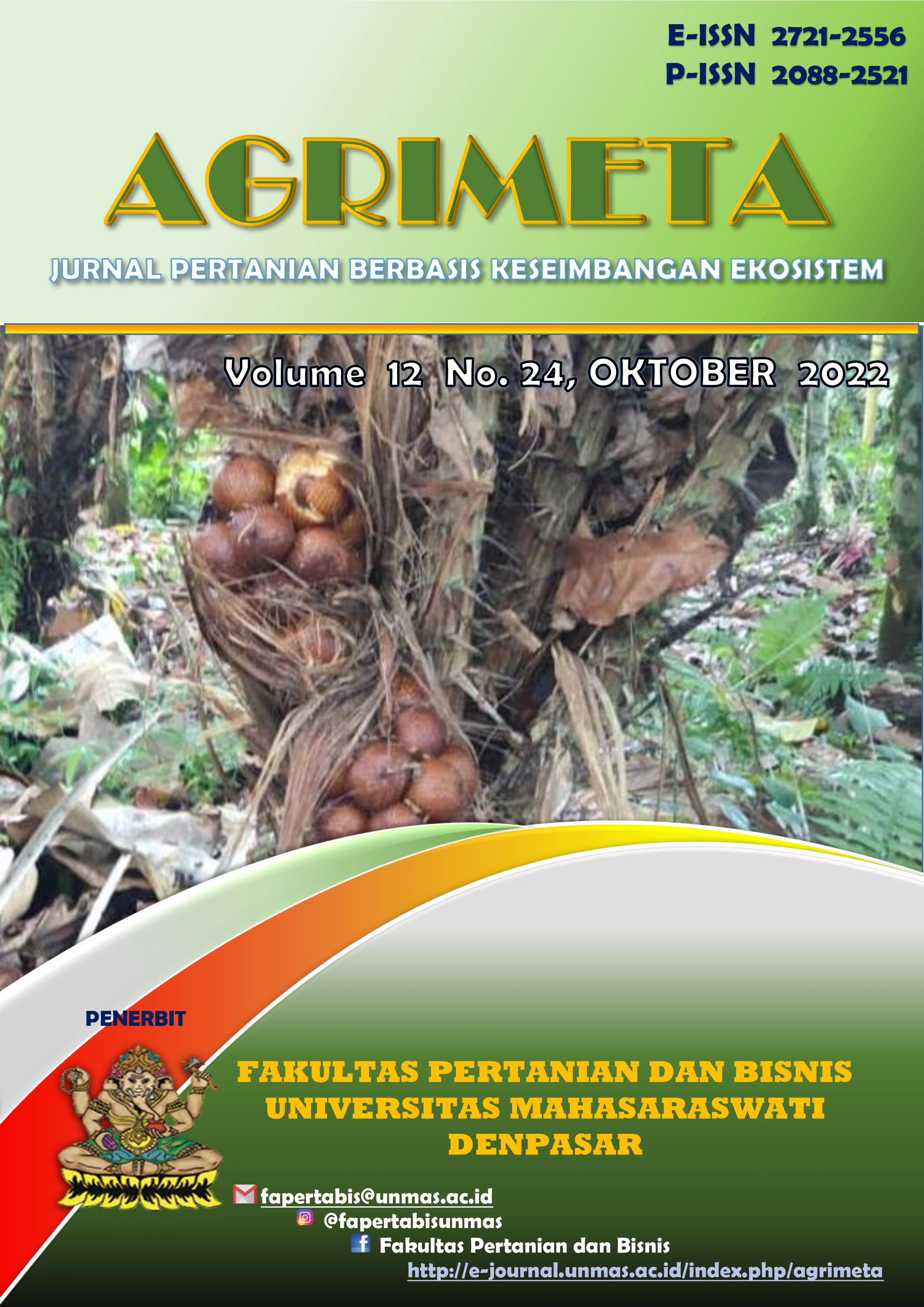PENGARUH PENGGUNAAN PLANT GROWTH PROMOTING RHIZOBACTERIA (PGPR) PADA PERENDAMAN BENIH TERHADAP PRODUKTIVITAS TANAMAN KEDELAI (Glycine Max L. Merril)
Keywords:
Soybean, PGPR, yield, seeds treatmenAbstract
Soybean needs continue to increase every year, while soybean productivity cannot meet it, causing the need for efforts so that the growth and yield of soybean plants can be increased. Continuous use of chemical fertilizers can reduce soil quality therefore, efforts are being made to increase crop production by using beneficial microorganisms so that they do not have a negative effect on the environment. One of the efforts made in increasing the growth and yield of soybeans is to utilize Plant Growth Promoting Rhizobacteria (PGPR) which is beneficial for plant growth and increase production. This study aims to see the effect of PGPR on soybean crop productivity. The types of PGPR used were P. agglomerans and E. cloacae which were applied to soaking soybean seeds before planting and applying liquid formula fertilizer at the beginning of growth. From the observed variables, number of pods per plant, number of pods filled per plant, number of seeds per pod, weight of 1000 grains of oven-dried soybeans, oven-dried seed weight per plant, yield of oven-dried seeds per hectare, weight of oven-dried plant canopy dan harvest index. Application P. agglomerans and E. cloacae increase yields of soybeans. Treatment of P. agglomerans and E. cloacae had a very significant effect on most of the observed growth parameters, except for the variable oven-dried weight of plant canopy
Downloads
References
Dursun A, Ekinci M, Donmez MF (2010). Effects foliar application of plant growth promoting bacterium on chemical contents, yield and growth of tomato (Lycopersicon esculentum L.) and cucumber (Cucumis sativus L.). pak.J.Bot., 42(5):3349-3356
Georgieva, O., Georgiev, G. 2003. Biological control of powdery mildew and mildew of cucumber with Enterobacter cloacae. European Journal of Plant Pathology. XIII International Plant Protection Congress. The Hague. The Netherlands, 2-7 July, 505
Glick BR, Karaturovı´c DM, Newell PC (1995) A novel procedure for rapid isolation of plant growth-promoting pseudomonads. Can J Microbiol 41:533–536
Hanafiah, K.A. 2004. Rancangan Percobaan : Teori dan Aplikasi. Raja Grafindo Persada. Jakarta. 260 Hal.
Khalimi, K., dan Alit, S. 2009. Pemanfaatan Plant Growth Promoting Rhizobacteria untuk Biostimulants dan Bioprotectans. Jurnal Echotropic 4 (2): 131-135.
Khalimi, K. dan Suprapta D.N. 2011. Application of Pantoea agglomerans in Compost Formulations to Improve Growth and Yield of Rice Plant.Laporan Penelitian.
K.Y. Kim • D. Jordan • G.A. McDonald Effect of phosphate-solubilizing bacteria and vesicular-arbuscular mycorrhizae on tomato growth and soil microbial activity Department of Soil and Atmospheric Sciences, The School of Natural Resources, University of Missouri, Columbia, MO 65211, USA
Mullen, M.D. 1998. Transformation of Other Elements. P. 369-386. in Husen et al. Rizobakteri Pemacu Tumbuh Tanaman. J. Mikrobiol. Indonesia.
Purwanti, E. 2002. Pengaruh Inokulasi Rhizo-Plus dan Pemupukan Fosfat terhadap Pertumbuhan dan Hasil Tanaman Kedelai. Skripsi. Fakultas Pertanian, Universitas Udayana, Denpasar.
Syakur. 2006. Peranan PGPR Tertentu dari Beberapa Strain Enterobacter radicincitans dalam Meningkatkan Ketersediaan P Tanah pada Tanah P-rendah yang Mengandung Jumlah dan Sumber Fosfat Berbeda. Disertasi. Humboldt University of Berlin. 83 hal






